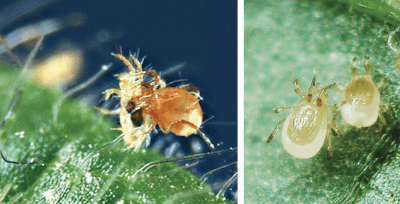

1. How do I determine what is damaging my plants?
Understanding what is damaging your plants can be complex and require specific identification of the pest or pathogen. Being able to locate and view an actual pest is the first step in properly identifying the problem. If a pest is not visible, the physical damage to the plant is the next telltale sign of what is affecting your grow. Surety is key; ARBICO Organics can provide growers with all the tools necessary to proper identification.
2. What should I do to prepare before releasing beneficial insects?
Timing is everything. Applying compatible or soft sprays can help reduce pest populations to a level in which predator introductions can thrive. Make sure sprays have no residual effects that will harm predators. Many biological sprays can be used in conjunction with predators and cause little harm to their populations. Some labs are testing for foreign matter, and ARBICO Organics cannot guarantee that leaving insects, in whatever capacity, on the plant will not prevent a result of failing.
3. How can I check if my beneficial insects are ready to use?
Bring your package inside. Check for viability once they have reached ambient environment temperature. Many predatory insects are not visible to the human eye. Use a microscope or loupe to look at a sample of the product on a piece of paper. Document any issues you see and notify your supplier.
4. How should predatory insects be deployed?
Unless otherwise noted, most predatory insects should not be stored and should be released into the growing environment as soon as possible. Each predatory insect will have unique packaging and release instructions. Understand how, when and where to apply the insects, mites or nematodes before you begin.
5. How often should I release predatory insects?
As with pesticide application, it is necessary to continuously apply predators. A common misconception is that releasing predators will immediately eradicate pests on plants. The likelihood of complete eradication is almost nonexistent, and the goal should be outcompeting pest reproduction as well as constant releases to ensure predator fecundity. Regular releases provide an opportunity for predators to cycle through life stages at different times preventing growers from being left without a predatory life stage in action.


